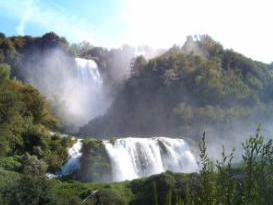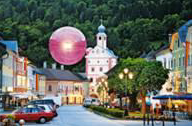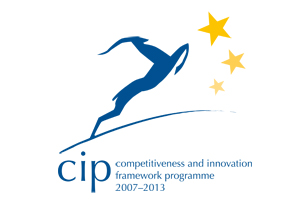Knowledge Networking Portal for Sustainable & Responsible Tourism










 Kuldiga (LV)
Kuldiga (LV)
| Contributor | Sabrina Vecchio Ruggeri |
|---|---|
| Country | Latvia |
| Keywords |
|
| Release date | 11/06/2014 |
| Landscape type | Urban |
| Topics |
|
| GSTC Criteria for Destinations |
|
| Marketplace category |
|
| Type |
|
| # | File name | Contributor | Release date | Uploaded by | Upload date | Size | Content type |
|---|
| Good Practice Innovation Sheet | ||||
  |
||||
| Items | Description | |||
| 1. WHO | ||||
| Key people and organisations (initiator, leader, partners) | Kuldiga Active Recreation Centre | |||
| Kuldiga District is one of the five administrative centres of West Latvia which unites together 14 local territorial units. The Administrative Center of Kuldiga District is historical town Kuldiga. | ||||
| Kuldiga Active Recreation Centre is an organization developing the sustainable tourism in Kuldiga District, Kurzeme Region (West Latvia) performing the Marketing and Branding of the Kuldiga tourism product, developing tourism events and festivals, building an image of Kuldiga as well as creating and managing innovative international projects. | ||||
| Key Figures | Surface | Inhabitants | Tourism arrivals | Tourism nights |
| 1756,7 km² | 27,272 | 131,936 | 75,485 | |
| 2. WHY | ||||
| Reason for taking the good practice action | In the rural regions of Europe the rural entrepreneurs are trying to deal with the changing situation in the rural areas and they are trying to keep the countryside alive. Besides tourism activities they focus on producing and selling of local/regional and home made products. But the old vision of creating new tourist products does not work. There is necessity to create all kind of innovations. Therefore the key objective of our Project Framework was to create and develop a new innovative method of creation of tourist product in combination of non-traditional way of bicycling and walking with exploring countryside products in EDEN destination Kuldiga, including original event management. The same time it was a difficult objective, because Kuldiga is a small rural tourist destination with historical and cultural traditions, it has a large number of heritage sites and is included in the National tentative list of UNESCO. We started with the new vision of sustainable development of the EDEN destination Kuldiga, Marketing and Branding plan, following with the large number of activities and EU funded projects. | |||
| Issues and challenge | In many periphery areas of Europe, in rural destinations, the regional products have great economic potential, especially when they are produced in harmony with the nature and environment and a regional or local identity. The challenge was because there is a trend that (the big cities) consumers are more and more interested in good and healthy tourism possibilities and food which is produced in a local and sustainable way. They often want to buy it straight from the producer and want to see were the food is produced and experience the traditional country life. Developing and implementing all these activities gives an extra dimension, because Western and Eastern European regions did not have close contacts for decades can co-operate together. This gives not only possibilities to exchange knowledge and experience how to develop the production of regional products. Moreover it gives excellent challenges and opportunities to exchange ideas of the best practice and develop the potential new and innovative tourism products in combination with new and traditional food processing methods, homemade products, recipes and other specialities. Often there are a lot of local ideas but what fails, is a good local or regional structure co-operation and strategy for production and marketing. Many farmers do not have the selling skills to make their regional product production really profitable and to involve it in local network and creative industries. | |||
| 3. HOW | ||||
| Methods /steps / tools used (to develop the good practice) |
According the aims of the overall project the main activities were targeted to analyse, identify, develop and implement the potentials of local tourist products and specialities (food and non food) in order to strengthen and diversify the rural economies in the small EDEN destination Kuldiga (and Kurzeme Region as well). Main activities: Setting up a research, education and training programme the knowledge and skill on the following subjects:
New trends and methods of innovative tourism and marketing - Setting up a team of creators and innovators producing original and non-traditional ideas and projects for sustainable tourism and local development:
|
|||
| 4. RESULT | ||||
| Specific/measurable results, benefits | The output as a result of the activities of this huge project is depending on the actual situation in each participating area. Project outputs are:
|
|||
| Recognitions (e.g. awards) | Award “European Destinations of Excellence(EDEN) 2007”; Award “European Heritage Label: Patrimoine Europeen 2008” Award “The best new Culture Tourism product of Latvia 2012”; Quality label “Q-Latvia” 2012; etc. | |||
| 5. REFLECTION | ||||
| Lessons learned | ||||
| Challenges met | Since 2007, we started targeted development of Sustainable tourism , the town of Kuldiga was selected as one of the TOP-10 Tourist Destinations of Latvia. The town of Kuldiga, located in the middle of the Baltic States could be a bridge between tourists from Europe and Russia/Scandinavia could contribute for the creation of new tourism network in this Baltic Sea region. | |||
| Critical success factors |
- Framework and Best Practices may be applied to other tourism experiences;
|
|||
| 6. MORE | ||||
| web-references, documents | ||||














































